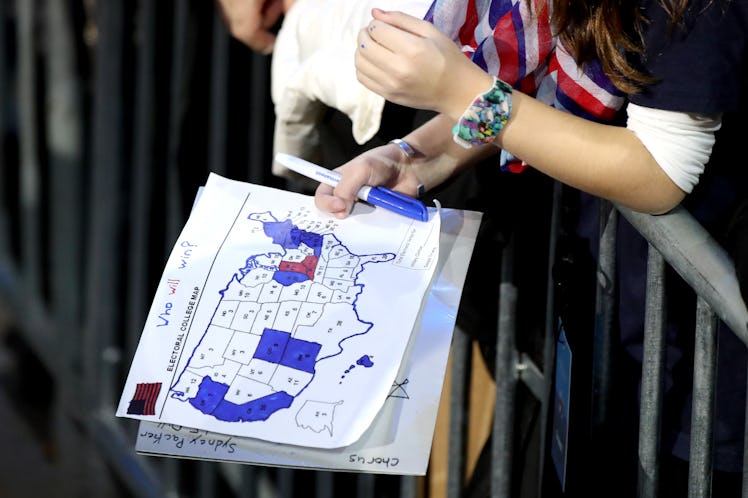
The Supreme Court Dropped A Major Ruling That'll Affect The Next Election
June may be the start of summer, not to mention Pride Month, but let's not forget that it's also Supreme Court month. The nation's highest court releases its biggest decisions at the end of June, and the 2019 session is no different. On Thursday, June 27, the Supreme Court announced its hotly anticipated decision on gerrymandering, the practice of drawing electoral districts with an advantage to one party — and in a move that will have repercussions for American elections for years to come, the Supreme Court upheld partisan-motivated gerrymandering. But let's back up a moment — how does gerrymandering work, after all? And why is it such a big deal?
On Thursday, the Supreme Court handed down a 5-4 ruling, which found that the U.S. Constitution did not forbid gerrymandering. Chief Justice John Roberts wrote in the majority opinion that the drafters of the Constitution had intended election districts to be drawn by state legislatures, and thus that they were ultimately a political decision — and not, he wrote, for the judicial branch to decide. “We conclude that partisan gerrymandering claims present political questions beyond the reach of the federal courts,” he wrote. It was up to legislators, he said, to find a solution.
Roberts joined the court's conservative members Clarence Thomas, Samuel Alito, Neil Gorsuch, and Brett Kavanaugh in the decision. Liberal justices Elena Kagan, Ruth Bader Ginsburg, Stephen Breyer, and Sonia Sotomayor dissented.
With the 2020 election around the corner, gerrymandering might be one of the biggest issues in American politics. The term refers to a strategy of drawing electoral districts in order to give one party an advantage. It mostly involves "packing" and "cracking" — packing opposing party voters together into one district, where their votes will be diluted by already being among the majority; and cracking apart blocs of opposing party voters into other districts, where their votes will be outnumbered by the other party.
For example, say there are 30 people who need to be split into three districts, and they're evenly split between the Purple Party and the Orange Party. The fair thing to do would be to draw those three districts so they each had five Orange Party voters and five Purple Party voters, giving each party a fair shot at winning an election. With gerrymandering, those three districts could be drawn so that the first two each had six Orange Party voters, and only four Purple Party voters; while the third had seven Purple Party voters and only three Orange Party voters. Sure, that last one would be all but guaranteed to vote in Purple Party candidates, but the other two would be far more likely to favor the Orange Party, leading to a situation where the Orange Party will have two seats to the Purple Party's one seat, despite not having an actual advantage with voters.
Unsurprisingly, with bigger numbers, this can snowball. That's how states end up with weird-looking district borders like Maryland's 3rd Congressional District, which has the dubious reputation of the most gerrymandered district in the nation.
Some legislators are pretty open about their intent when drawing districts, too. In 2016, Republican David Lewis, a member of North Carolina's General Assembly’s redistricting committee, came out and said he intended to give Republicans the advantage, per The New York Times. “I propose that we draw the maps to give a partisan advantage to 10 Republicans and three Democrats,” he said, “because I do not believe it’s possible to draw a map with 11 Republicans and two Democrats.” Per the Times, Republican congressional candidates that year won 53% of the vote statewide, but 77% of the districts.
It goes without saying that this could have significant consequences in upcoming elections. Besides swinging districts in the presidential election, gerrymandering could also swing congressional races, leading to unbalanced outcomes in who is elected to Congress.
The Supreme Court's decision isn't to say that this issue is done — experts and advocates have been working on coming up with solutions to gerrymandering, with options like encouraging legislatures to hand off the responsibility of drawing districts to nonpartisan commissions, or to require districts to follow "contiguous" community lines. What to do in the meantime? Well, no matter what district you're in — you can still vote.